History of Yuzhno-Sakhalinsk
Foundation of Yuzhno-Sakhalinsk
The Russians first visited Sakhalin Island in 1742. In 1805, the Russian-American Company sent Adam Johann von Krusenstern, a Russian admiral and explorer, to Sakhalin to hoist the Russian flag on the island. Officially, neither Russia nor Japan claimed Sakhalin and the Kuril Islands. In 1855, a treatise on friendship and the border was signed in Shimoda, which marked the beginning of diplomatic relations between Russia and Japan. According to it, Sakhalin remained jointly owned by the two countries.
The settlement of Sakhalin by Russians was mainly due to exiled convicts. In 1869, Sakhalin was officially declared a place of exile and hard labor. In 1875, the St. Petersburg Treaty was signed between the Russian Empire and Japan, according to which Sakhalin completely went to Russia and the Kuril Islands - to Japan.
In 1881, according to the order of the military governor of the Primorsky region, Major Vladimir Yantsevich was appointed head of exiles in South Sakhalin. He received the following instructions: “For the settlement of those who are finishing their terms of hard labor, a place that is quite convenient for arable farming should be chosen. The selected site, if possible along the main road from south to north, should be planned, divided into sections and, as a new settlement, named by some permanent name.”
In 1883, Yantsevich applied for the approval of the names of four new villages founded in the south of Sakhalin: Solovyovskoe, Mitsulskoe, Vladimirovka (future Yuzhno-Sakhalinsk), and Vlasovskoe. In 1885, 57 people lived in Vladimirovka, in 1895 - 130 people. In 1897, there were 150 residential and commercial buildings here: a church, a school, a post office, a hospital, a mill, trade shops, a number of government buildings, and a lot of residential log houses.
More historical facts…
Japanese period in the history of Yuzhno-Sakhalinsk
In 1905, after the defeat of the Russian Empire in the Russo-Japanese War, according to the Treaty of Portsmouth, part of Sakhalin south of the 50th parallel was ceded to the Japanese Empire and became the Karafuto Prefecture. The northern part of Sakhalin remained under the control of the Russian Empire.
In 1908, Vladimirovka was renamed Toyohara (“bountiful plain”). In 1915, the settlement received the status of a town. The Japanese made their own plan for the development of the town with a clear rectangular planning system with the direction of streets along the railway and perpendicular to it.
The building density was high, as a result, a significant number of residential buildings were without outbuildings, sheds and other ancillary buildings, as well as yards. On the outskirts of the town there was a well-maintained park with an artificial reservoir. In 1920, the population of Toyohara was 14,176 people, in 1935 - 28,459.
On February 11, 1945, Stalin, Roosevelt and Churchill signed an agreement in Yalta on the conditions for the USSR’s entry into the war against Japan. Among the conditions were the return of South Sakhalin to the USSR and the annexation of the Kuril Islands. In August 1945, Soviet troops entered Toyohara.
This is what Toyohara looked like from the words of Dmitry Kryukov, head of the civil administration of South Sakhalin and the Kuril Islands, who arrived in the town in September 1945: “The town mainly consists of wooden buildings. The houses are adjacent to each other, timber-frame, plastered. Many of them look good, but they are cold.” The majority of the population were Japanese and Koreans.
Yuzhno-Sakhalinsk - the capital of Sakhalin Oblast
On February 2, 1946, Yuzhno-Sakhalin Oblast was formed on the territory of South Sakhalin and the Kuril Islands. On June 4, 1946, Toyohara became its administrative center. It was renamed Yuzhno-Sakhalinsk (“South Sakhalin City”).
On January 2, 1947, Yuzhno-Sakhalin Oblast was liquidated and its territory was included in Sakhalin Oblast, a separate region of the Russian Soviet Federative Socialist Republic. On April 18, 1947, Yuzhno-Sakhalinsk became its administrative center.
In the spring of 1947, the mass repatriation of the Japanese began. By August 1, 1947, 124,308 people left Sakhalin, almost half of the local Japanese. During 1947-1949, about 400 thousand people were brought to Sakhalin from the central regions of Russia, Primorye and the Far East. By 1949, only 2,682 Japanese remained on Sakhalin - those who managed to obtain a Soviet passport. The Koreans from Sakhalin were not forcibly evicted, so most of them stayed. In 1959, the population of Yuzhno-Sakhalinsk was 85,510 people.
In subsequent years, the appearance of Yuzhno-Sakhalinsk changed again - the frame houses built by the Japanese were demolished. Today, except for the railway and some buildings of that time turned into museums, almost nothing reminds of the Japanese period in the history of this city.
General views of Yuzhno-Sakhalinsk
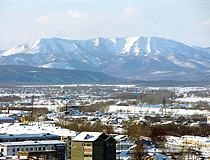
Yuzhno-Sakhalinsk from above
Author: Vladislav Yarowind
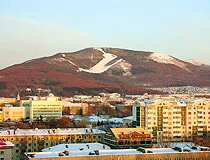
General view of Yuzhno-Sakhalinsk
Author: Vladislav Yarowind
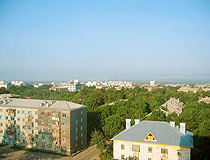
Yuzhno-Sakhalinsk cityscape
Author: Shinya Ichinohe
Yuzhno-Sakhalinsk - Features
Sakhalin Oblast is the only region in Russia located entirely on the islands. Yuzhno-Sakhalinsk stands at some distance from the sea coast, about 25 km from the coast of the Sea of Okhotsk. Chekhov Peak (1,045 m), one of the highest peaks of Sakhalin, rises to the north-east of the city. Locals call the city simply Yuzhnyy.
Sakhalin Island is part of the temperate monsoon zone. Yuzhno-Sakhalinsk is located on a plain surrounded by hills, due to which its climate has certain peculiarities. In summer, it can be very hot in Yuzhno-Sakhalinsk, and in winter, due to the lack of wind, severe frosts. The coldest month is January with an average daily temperature of minus 12.2 degrees Celsius, the warmest month is August with an average daily temperature of plus 17.3 degrees Celsius. Yuzhno-Sakhalinsk is equated to the regions of the Far North.
The city is located in an earthquake-prone area. The probability of strong earthquakes is relatively high. The distance from Yuzhno-Sakhalinsk to Moscow is 9,140 km by road and 6,640 km in a straight line.
The majority of the population is Russian, but the proportion of Koreans is also high (about 20%). Out of 43 thousand Sakhalin Koreans, most of them live in the capital of the region. In the city you can also find representatives of the indigenous peoples: Nivkhs, Ainu and Oroks, but their number is very small.
Yuzhno-Sakhalinsk is the largest transport hub on Sakhalin. Anton Chekhov Yuzhno-Sakhalinsk Airport offers regular flights to such cities as Vladivostok, Krasnoyarsk, Novosibirsk, Khabarovsk, Moscow, Komsomolsk-on-Amur, Petropavlovsk-Kamchatsky, Seoul (South Korea), Sapporo (Japan), Tokyo (Japan).
In Yuzhno-Sakhalinsk, there is a high level of air pollution due to the high motorization of the population and the location of the city in the valley, which slows down the dispersion of harmful substances.
Today, it is one of the dynamically developing cities of the Far East, the production and intellectual center of Sakhalin and the Kuril Islands. Oil and natural gas production, as well as their processing, are the most important components of the local economy.
This is one of the most visited cities in the Far Eastern Federal District of Russia. Yuzhno-Sakhalinsk is often visited by cruise ship passengers (mostly Japanese citizens). Restaurants of Yuzhno-Sakhalinsk offer dishes of Russian, Chinese, Korean, Japanese, Uzbek, Georgian, Italian cuisines.
The architecture of the period of the Karafuto Prefecture gives a special flavor to Yuzhno-Sakhalinsk. Today, in the city there are about 40 objects of cultural heritage of this period. In the future, tourism should become the basis for the economic development of Yuzhno-Sakhalinsk.
Special thanks to Vladislav Yarowind for the photos of Yuzhno-Sakhalinsk.
Main Attractions of Yuzhno-Sakhalinsk
Sakhalin Regional Museum of Local Lore - the central museum of Sakhalin Oblast founded in 1896. It is housed in a very picturesque Japanese building constructed in the Imperial Crown Style in 1937. This is the only such building on the territory of Sakhalin and all of Russia, the most significant architectural monument of Yuzhno-Sakhalinsk. Its diverse expositions are devoted to nature, history of the indigenous peoples of the islands, culture and development of Sakhalin. Kommunisticheskiy Avenue, 29.
Sports and Tourist Complex “Gornyy Vozdukh” (“Mountain Air”) - a ski resort and sports complex, existing, according to one version, since the days of the Japanese Karafuto Prefecture (1905-1945). Today, it is one of the most dynamically developing ski resorts in the Far East of Russia.
The unique location of the complex - in the center of Yuzhno-Sakhalinsk - allows guests to find themselves in the world of winter sports in just a few minutes. The ski resort offers 10 slopes of various difficulty levels for both beginners and professionals. Their total length is over 23 km. The ski season lasts from December to the end of April.
It is one of the main organizers of excursion tours in Sakhalin Oblast: sports, excursion, business tourism, as well as ecological tourism. The complex has a network of hiking and cycling routes. There are also restaurants and cafes here.
Museum and Memorial Complex “Pobeda” (“Victory”) - a square with a cultural and educational center, where you can find historical expositions dedicated to the Russian-Japanese and World War II. A T-34-85 tank is installed on a pedestal in front of the building. Pobedy Avenue, 1.
Museum of the History of the Sakhalin Railway. This museum is dedicated to the history of railway construction on Sakhalin. The exposition has a lot of interesting and rare exhibits. In the open area of the museum, Sakhalin railway equipment is exhibited: steam locomotives, carriages of various types, etc. Vokzalnaya Street, 55.
Sakhalin Regional State Art Museum - the only art museum in Sakhalin Oblast with over 11 thousand works of art. On the ground floor, temporary art exhibitions are held, the art of artists from Russia, Korea and China is presented. The second floor houses permanent exhibitions: “Contemporary Korean Art”, “Christian Art”, “Russian Art of the 19th - early 20th centuries.” Lenina Street, 137.
Museum of the Book of Anton Chekhov “Sakhalin Island”. This museum is dedicated to Anton Chekhov’s trip to Sakhalin in 1890, as a result of which he wrote the book “Sakhalin Island”. Here you can find the following collections: “Painting”, “Graphics”, “Written Sources”, “Photo Materials”, “Numismatics/Phaleristics”, “Household Items, Arts and Crafts”, “Sculpture”. The personal belongings of Chekhov’s family members and various items belonging to exiles are exhibited here. Mira Avenue, 104.
Yuzhno-Sakhalinsk Park of Culture and Rest named after Yuri Gagarin - the most beautiful recreational area of Yuzhno-Sakhalinsk founded in the Japanese period of the city’s history in 1906. In 1968, when the famous cosmonaut Yuri Gagarin died in a jet crash, the park was renamed in his honor. Today, this place attracts visitors with its amazing landscapes and an abundance of entertainment. Sakura blooms here in spring. Detskaya Street, 1.
Resurrection Cathedral - the first church in Yuzhno-Sakhalinsk built in the 1990s. This one-domed cathedral in the pseudo-Russian style looks surprisingly graceful and is located in the immediate vicinity of Gagarin Park. Svyatitelya Innokentiya Boulevard, 3k1.
Cathedral of the Nativity. The height of this church, consecrated in 2016, is 77 m, which is why it effectively dominates the surrounding landscape. Accommodating up to 1,000 people, it is built in the Novgorod style with a gilded dome surrounded by four bright blue ones. Inside, you can admire the five-tiered iconostasis in the Russian style, decorated with 98 icons. The outer walls are decorated with mosaics created in Jerusalem. Ilarion Troitsky Street, 1.
Chekhov Peak. Several picturesque mountain peaks are located in the vicinity of Yuzhno-Sakhalinsk. The highest one (1,045 m) is named after the famous Russian writer Anton Chekhov. The trip to the top takes several hours. From the height of Chekhov Peak you can admire the city itself, the waters of Aniva Bay and the Sea of Okhotsk. On a cloudless day, you can even see the northern tip of the Japanese island of Hokkaido. There is a small Japanese temple at the top of the peak.


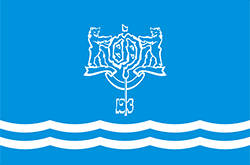
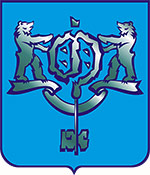
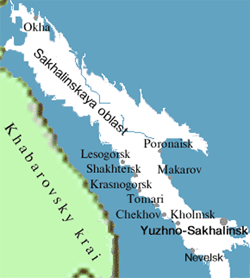



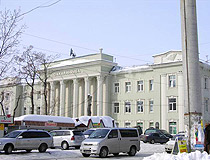
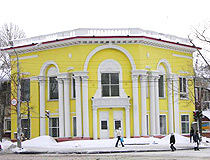
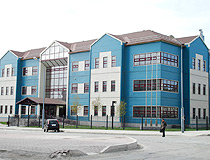
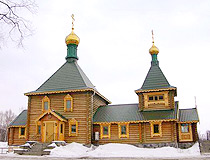
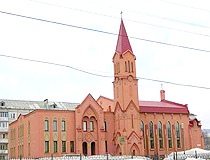
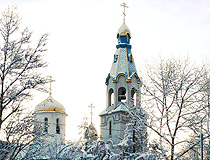
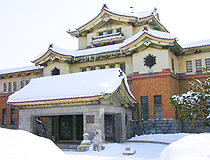
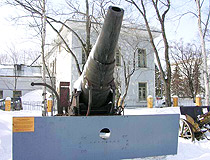
The comments of our visitors